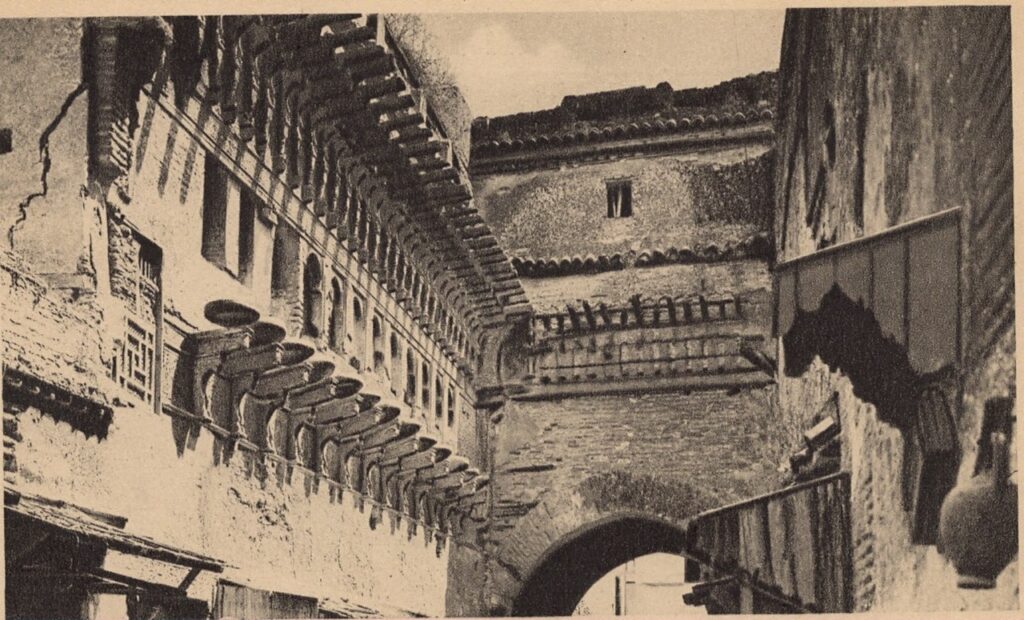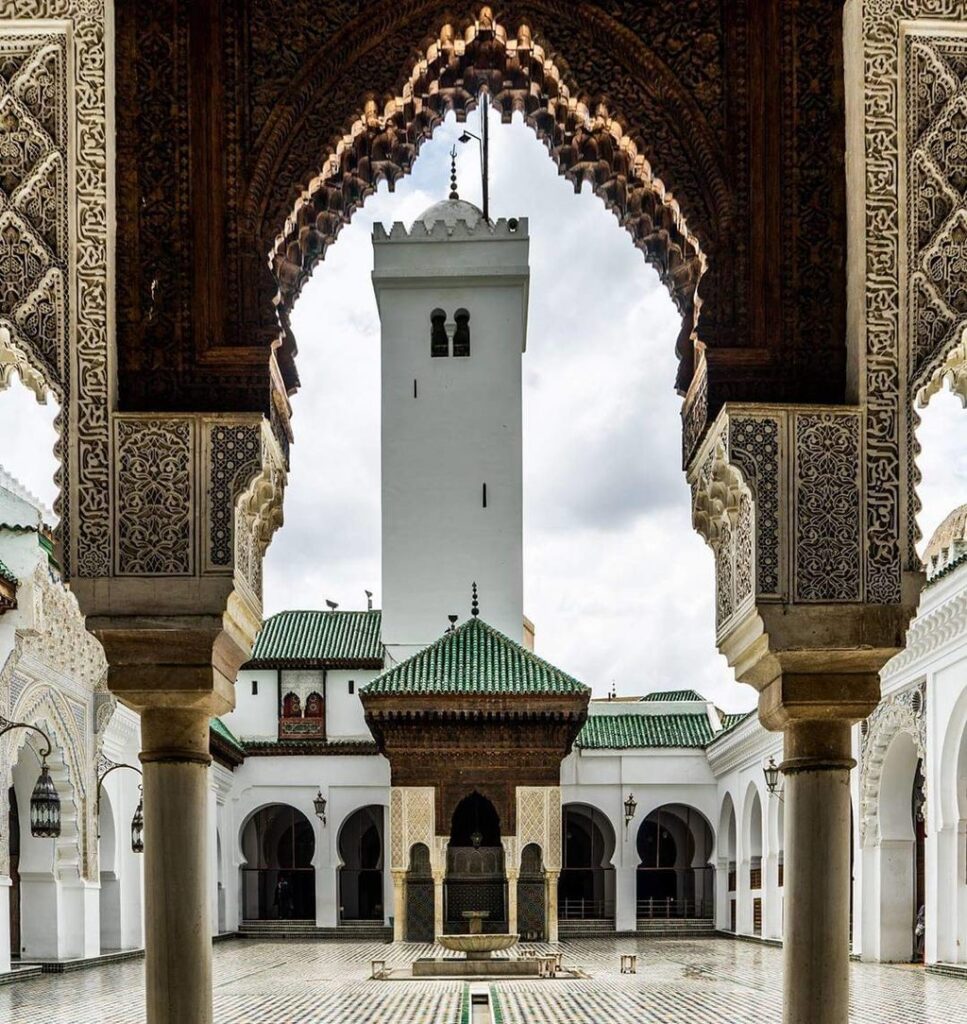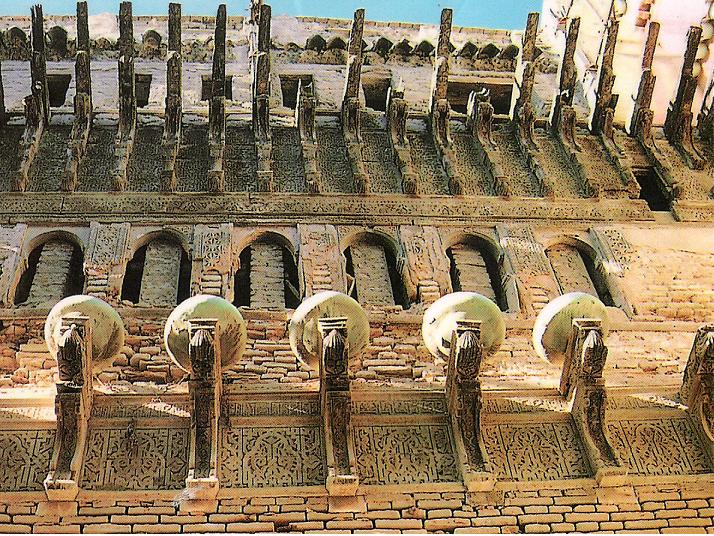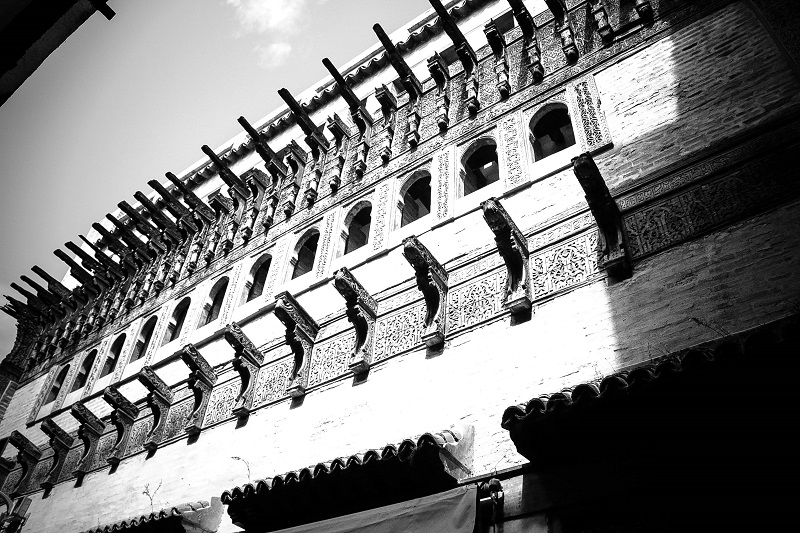Articles
The rise of hydraulic clocks in Morocco
Date of publication of the article: 25/03/2022
Year of publication: 2022
Article theme: Architecture, Islam, Marruecos, Science.
From the water clock erected at the Koutoubia gate by the Almohads to the numerous hydraulic clocks of Fez of the Marinid dynasty, Morocco was the scene of a veritable race of inventions before the appearance of mechanical clocks.
Before the birth of mechanical clocks in the 14th century, other types of clocks were used to tell the time with a certain precision. The hydraulic clock, for example, was intended to indicate the time by means of the flow of a liquid contained in a container through a small orifice. Although its invention dates back to antiquity, the Arabs and the Chinese excelled in adapting these models. In Morocco, for example, the earliest evidence of water clocks dates back to the 13th century.
In Mémoires du patrimoine marocain (Editions Nord Organisation, 1986), historian Abdelhadi Tazi approaches the subject by relying on the work “Masalik al-absar fi mamalik al-amsar,” the encyclopedia of Shihab al-Din Ahmad ibn Yahya ibn Fadhl Allah al-ʿOmari (14th c.), where he describes the existence of a water clock in the Koutubia mosque in Marrakech.

From the water clock of the Koutubia to the inventions of the Marinids.
“Suspended in the air at about 50 cubits, it descended every hour and emitted a sound. Its bells could be heard from far away,” says Ibn Fadhl Allah Al-ʿOmari, who added that at that time “that magana (clock) had ceased to function.” This description leads Abdelhadi Tazi to state that this clock would be considered “one of the inventions that accompanied, or even preceded, the appearance of hydraulic clocks in the East.”
“If we can collect information on the water clocks built (…) in Damascus in the middle of the 6th century [hegira] in Baghdad (…), we can imagine the size of the water clock of the Koutubia mosque in Marrakech, especially since the Eastern and Western regimes had been in competition, especially under the Almohad dynasty,” he explains
But the capital of the Almohads and Almoravids was not the only city of the Cherifian kingdom to be equipped with clocks of this type. According to the same work, several hydraulic clocks were created in the city of Fez, in particular so that the mosque of Qarawiyyin could determine the time accurately. The historian indicates that one of the water clocks was created in 1286, designed by Abu Abdellah Ibn Al Habbak, at the suggestion of Cadi Ibn Yaknoul, in the early years of the Banu Marine (Marinids). Built in the mosque of Qarawiyyin, it “indicated to the citizens the hours of night and day”. “The sundials and hourglasses of the mosque were not sufficient, considering that all the mosques of the city followed this building since its creation” for the determination of the hours of prayers.

Abdelhadi Tazi recalls that the mechanism of this one was similar to that of the “32 water clocks that the city of Figuig had.” “They had a basin in which floated a semicircular copper vessel with an opening at the bottom that allowed the water to flow little by little. When it was full, the vessel would sink to the bottom of the basin, announcing the arrival of the hour,” he explains. Ibn Al Habbak’s clock was distinguished by its smaller size and simplicity.
However, the location of this invention on the minaret would have hastened its abandonment, “as its supervisors had to climb a hundred steps before reaching it.” “As the minaret could not house a clock that required almost constant maintenance through the supply of water,” the Merinid sultan Abu Yusuf Yaqub decided to create a “chamber” for the muezzins and the experts in charge of telling the time. This space was transformed into a “scientific museum” with hydrological, sundials, hourglasses and astrolabes, before modern clocks were introduced in Europe.
In 1317, Sheikh Abu Abdellah Mohamed Sanhadji translated the design of the famous water clock created by Mohamed Ben Essaddiniya El Qarstouni, as part of a project financed by benefactors of the Merinid sultan Abu Said Uthman ben Yaqub. Subsequently, his son, Abu al-Hasan ibn Uthman, ordered the Fqih Abu Abdellah Mohamed ibn Al Arabi to rehabilitate the clock. The accession to the throne of Sultan Abu Inan Faris in 1348 was marked by the inauguration of a new water clock by Ibn Al Arabi, intended to replace the old one.

The water clocks of the Bou Inania and Al Jay Madrasa
In 1357, Fez knew a new innovation with the revelation of the new invention of Abu Al Hassan Ali Ben Ahmed Al Tlemceni, alias Ibn Al Fahham, who built a water clock in the Medersa Bou Inania. Two years later, an identical hydraulic clock, the work of the same expert, was inaugurated in Tlemcen.
“Its mechanism remains unknown. Researchers consider that it would have worked according to an unequal time system, a system that separated the day (from sunrise to sunset) into 12 equal parts and the night (from sunset to sunrise) into 12 other equal parts,” writes in Patrimoine Horloge about the clock of the Medersa Bou Inania. “He also believes that the time was indicated by opening windows, which in turn were activated by a system of pulleys connected to a water tank, a float and a carriage. But the operation and scheme of the clock mechanism is unknown.”

Five years later, the “chamber” of the Qarawiyyin Mosque was equipped with a new clock designed by Abu Zayd Ben Abderrahmane Ben Soulaiman El Lijaii alias Al Jay, adds historian Abdelhadi Tazi. He also points out that neglect, lack of maintenance, the emergence of new more modern clocks and natural disasters accelerated the disappearance of water clocks in Morocco. In this regard, he recalls how several historic monuments in Fez were rehabilitated after the earthquakes of 1624 and 1755, without these masterpieces being restored.
In 1997, various sources mentioned the restoration of one of the water clocks of the Qarawiyyin mosque, indicating that it could be the Sanhadji-El Qarstouni clock, created in 1317.
In 2019, the Agency for the Densification and Rehabilitation of the Medina of Fez (ADER-Fez) also announced the future implementation of the restoration of the waterwheels that fed the hydraulic clock located in front of the Bou Inania Madrasa.
Source: Yabiladi
Translation: FUNCI


